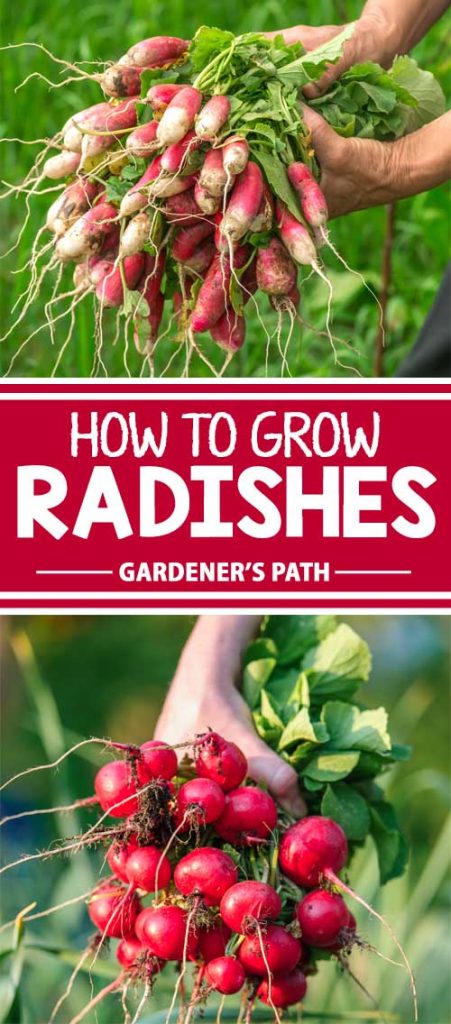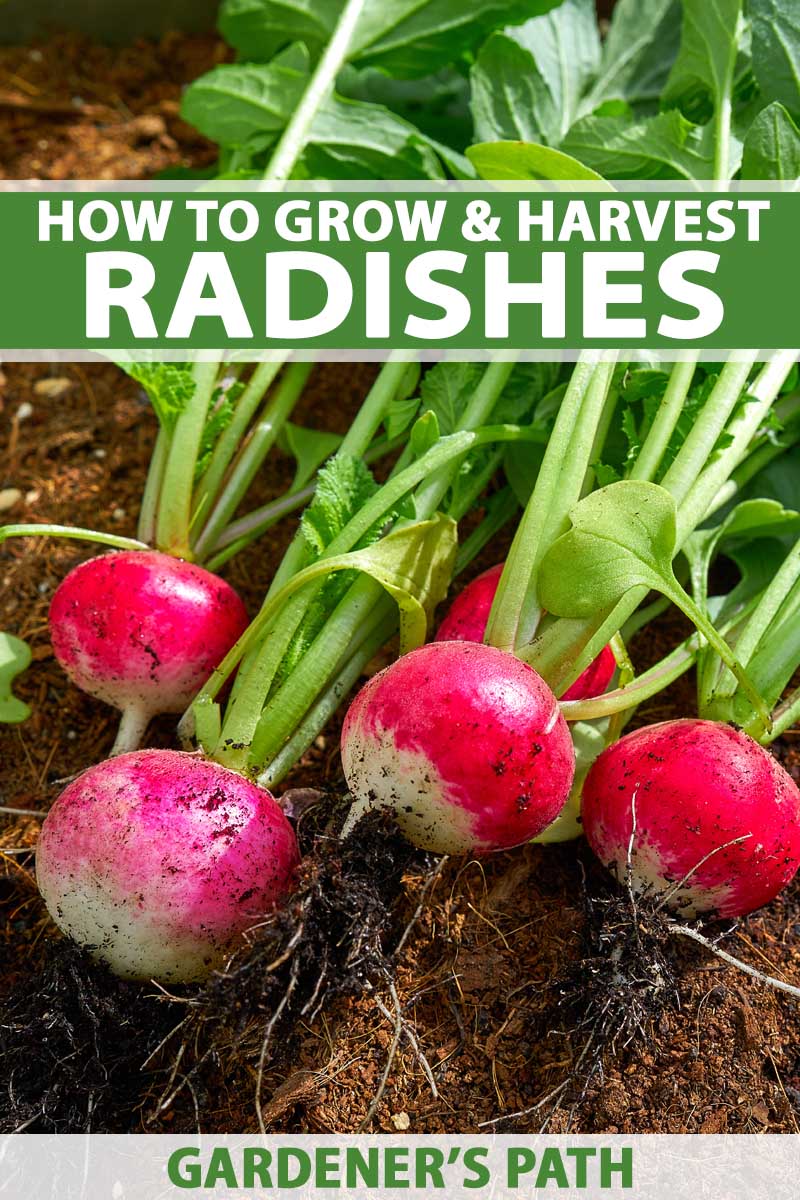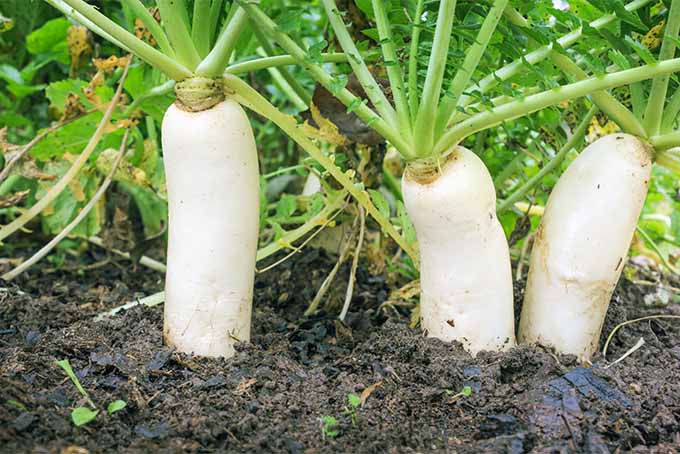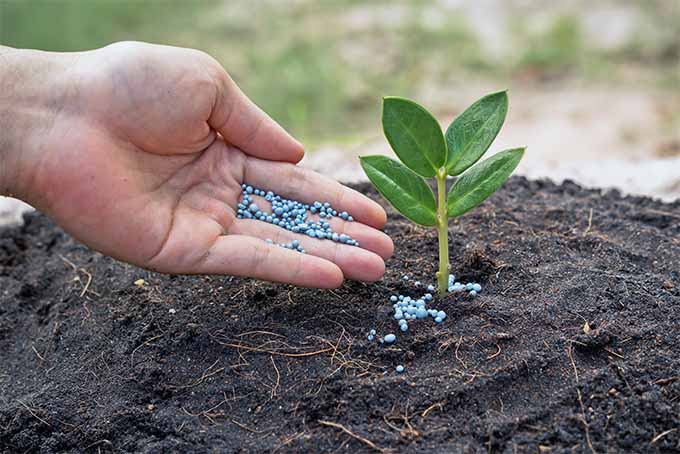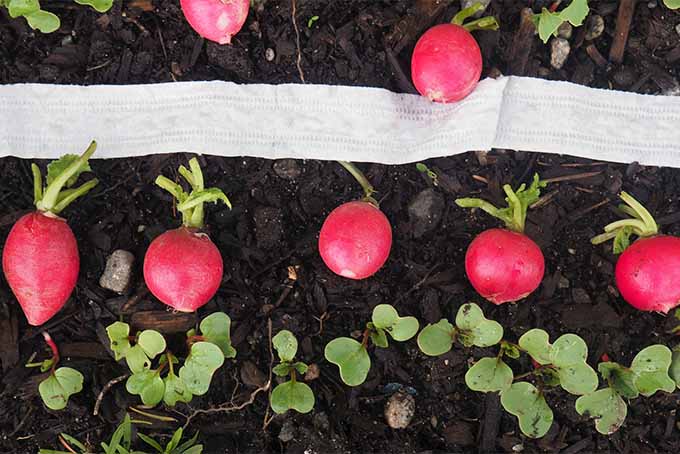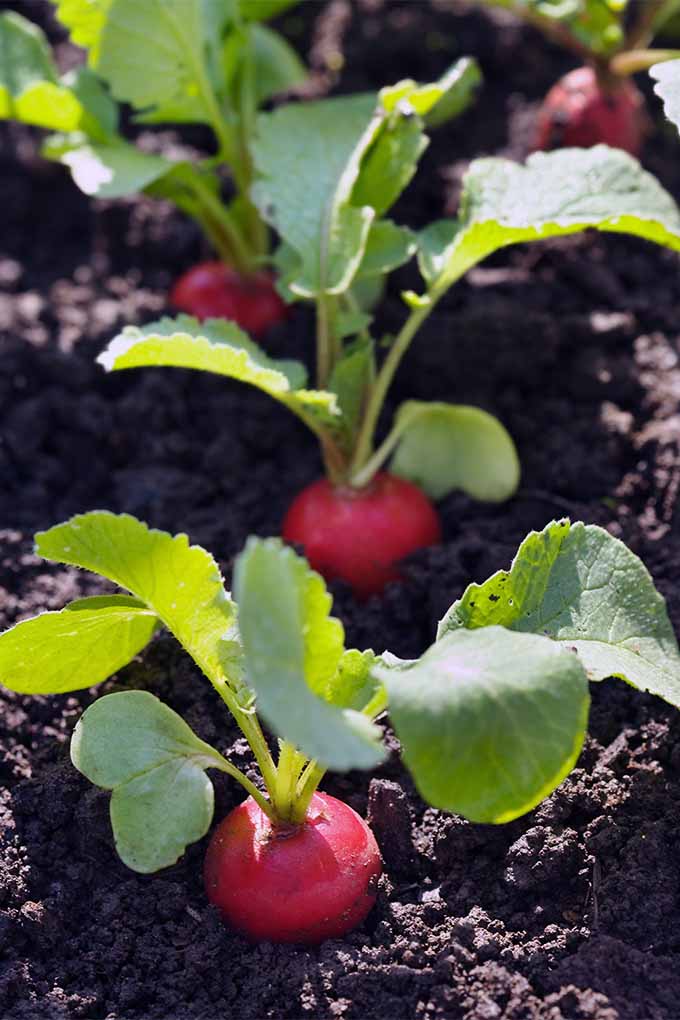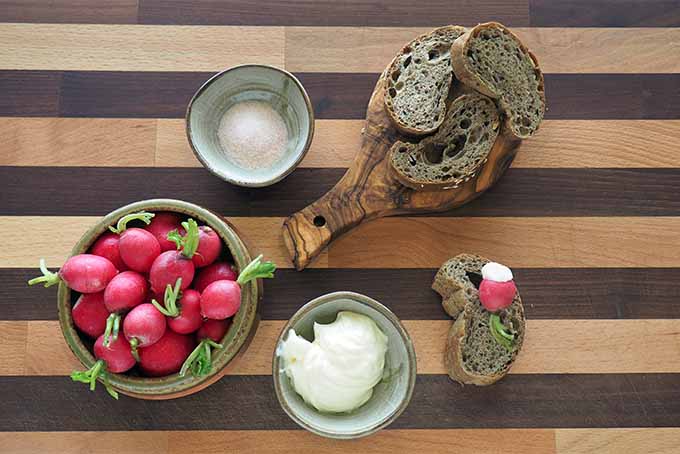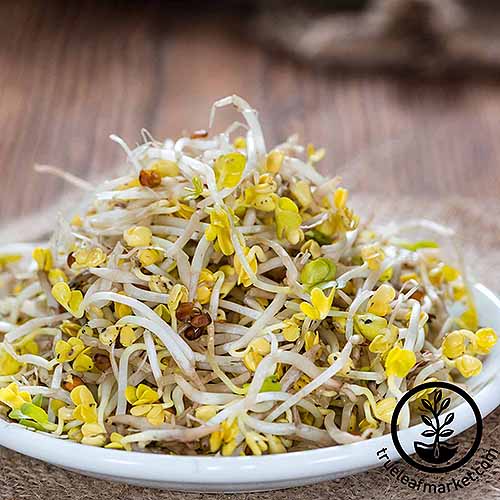Hardy and quick to mature, successive plantings in early spring and again in early fall will ensure a steady supply of crisp, piquant roots. A good source of vitamin C, they also make a good companion plant in the garden. And every part of the radish is edible! The peppery roots are familiar as a component of appetizers, salads, and tea sandwiches, but they can also be roasted, steamed, or sautéed. We link to vendors to help you find relevant products. If you buy from one of our links, we may earn a commission. Let’s have a closer look at how to grow these fiery gems, the different types of radish, which other plants benefit from their company, storage tips, and a few unique serving suggestions.
The Family Tree
Radishes, Raphanus sativus, belong to the Brassicaceae, or mustard family. Also known as cruciferous vegetables, some Brassica relatives include arugula, cabbages, broccoli, cauliflower, kale, rapeseed (canola), kohlrabi, and turnip.
Thought to originate in southeast Asia, they were among the earliest of cultivated crops, and one of the first European vegetables to be introduced to the Americas. An annual or biennial, they’re grown primarily for the engorged taproot – which can be round, cylindrical, or tapered in shape. Sizes vary greatly, from the small spring types like the 1-inch Cherry Belle found in most North American markets, to the large daikon and winter varieties, which can have roots as long as 24 inches. Colors are equally variable, with shades of pink, red, mauve, white, yellow, and even black roots. Radishes fall into three different types:
1. Early
These require the cool months of early spring and autumn to develop properly, and mature very quickly, in 20-30 days.
2. Midseason
These summer varieties are much more heat resistant, and can be sown successively from May to August. Midseason varieties are still on the small side of the scale, and require a bit longer to mature, at 30-40 days.
3. Late
Also known as winter radishes, these can be sown throughout the winter in warm regions, and late summer into autumn in temperate zones. The winter variety have large roots and require still longer to grow, with 60-70 days needed for a mature crop.
Soil Preparation
This taproot crop is a medium to heavy feeder and likes soil that’s loose, cool, and fertile. Seed may be sown when soil temperatures reach into the 40°F range, with the best germination rates occurring in the range of 55-70°F. Prior to sowing, amend the soil with 2-4 inches of mature organic material such as compost or rotted manure. An application of an all-purpose fertilizer, such as 10-10-10 or 16-16-8, using approximately 1 cup for every 10 feet of row, is also suggested. Thoroughly work the fertilizers into the top 6 inches of soil.
A Brief Fertilizer Tutorial
For those unfamiliar with fertilizer ratios, the three numbers are always expressed in the same format – the first is nitrogen (N), followed by phosphorus (P), and then potassium (K).
1. Nitrogen
Nitrogen is associated with the healthy growth of green, leafy tops. Every plant protein contains nitrogen, and it’s essential to the compound chlorophyll, which provides leaves with their green pigment.Chlorophyll is needed for the process of photosynthesis, which produces food for the plants.
2. Phosphorous
Phosphorus is required to metabolize and transfer energy where it’s needed – from leaves to roots to developing fruit and seeds.
This makes it important in the development of strong roots for healthy growth, and for propagation in the form of prolific, robust blossoms.
3. Potassium
Potassium (or potash) acts as a regulator. It governs metabolism, water distribution throughout the plant, and root development. As all vegetables have leafy tops in some form, they require nitrogen in the largest amounts. Phosphorus and potassium are also critical for leaf, root, and stem development, but in lesser amounts. And, as cool temperatures make it more difficult for a plant to access nutrients via elemental uptake, supplements of phosphorus and potassium early in the season are vital. Ensuring these two elements are available is critical in the first 1-2 months of growth – and once the soil warms, they’re readily available for plants to access in normal, healthy soil. Nitrogen is often applied as a side dressing later in the season to prevent yellowing of leaves and stems, and to ensure that the process of photosynthesis flows smoothly. In a nutshell, the application of a soluble fertilizer mixed with the soil in spring makes nutrients readily accessible for young plants to grow quickly and produce maximum yields.
Sowing and Cultivation
For spring varieties, seed must be sown in cool weather, and can be planted as soon as the soil is workable. The seeds of R. sativus remain viable for about four years under proper storage conditions, and they germinate quickly – within 5-7 days. They’ll do best if not sown too closely together, in a sunny location. Too much shade will result in plenty of leafy growth, but roots will be skimpy. Sow about one-half inch deep in trenches spaced 12-18 inches apart. If generously spaced, about 1 inch apart, you can eliminate the task of thinning these quickly maturing veggies. Conventional seed tape for this variety is also available directly from Burpee, as well as packets of 1000 or 2000 seeds. And Burpee also offers an organic version of this seed, in packages of 1000 seeds each. To ensure a steady supply of fresh spring radishes, sow a row every week while the temperatures remain spring-like. Sow again in late summer and early fall, when the day’s heat is waning. Burpee Certified Organic Seed Tape, Radish Cherry Belle Due to their quick growth rate, cultivation and weeding are not usually needed. Because the roots are right underneath the soil surface, deep hoeing often does more harm than good, and should be avoided. Some popular spring varieties include Champion, Cherry Belle, Early Scarlet Globe, Easter Egg, and Snow Belle. The popular Cherry Belle is also available from Mountain Valley Seed Co. Summer varieties have essentially the same requirements for soil preparation and fertilizing, and heat resistant varieties can be sown until August. Try a variety like French Breakfast, Icicle, or Scarlet King for summer growth – but keep in mind that these must be kept well-watered to flourish in hot temperatures.
White Icicle Seeds White Icicle seeds can be purchased from MV Seed Co. Due to their much greater size, winter varieties naturally require more garden space. Prepare soil as for spring and summer varieties, but plant seed three-quarters of an inch deep with 6 inches between the seeds. During the growing season, cultivate carefully so as to avoid disturbing the roots. A winter crop will also benefit from a side dressing of nitrogen midway through the season.
Round Black Spanish Seeds Chinese Rose, China White, and Round Black Spanish are reliable winter performers. Black Spanish seeds can be purchased online from Mountain Valley.
Harvest and Storage
It’s important to harvest radishes before the roots turn woody and bitter. To harvest early roots, simply pull them from the ground when they’re the size of large marbles, and brush off excess soil. Wash well just before use, and store leaves separately from the roots for longer storage in the refrigerator.
For spring and summer varieties, it’s important to harvest them pronto, as leaving them in the ground after maturity will result in rapid deterioration of their taste and texture. After picking, trim the tops, brush off soil, and store in plastic bags or a covered dish in the fridge. If you do choose to wash them off right away, be sure to pat them dry to prevent rot. The edible greens of spring and summer types will only keep in the refrigerator for about 2-3 days. But the roots will keep for 5-7 days. Winter varieties are a bit different, as they can be left in the ground until the first frost without any flavor deterioration. They’re also very cold hardy and will keep in moist storage for several months. In the refrigerator, they can be stored for several weeks. For long-term storage in root cellars, line a box with a thick layer of stray and lay in the radishes, then layer with straw, a bit of soil, then more straw. Or, after the first frost, you may choose to harvest and then ground trench them outdoors in the same manner. Dig a trench several inches deeper than the roots are wide, add a thick bed of straw, the radishes, more straw, some soil, and a top layer of straw.
Diseases and Pests
Because of their fast maturity rate, diseases from fungi and bacteria are rarely problematic. However, infestation from insects may occur. The most common issues are root maggots and flea beetles, and there are simple fixes for both. Practicing a three-year crop rotation, and not planting radishes in areas where cabbages have previously been grown, will help to minimize root maggots. And as flea beetles attack the leaves, a floating row cover will prevent damage from these pests.
Companion Planting
Like marigolds, radishes are a good all-purpose aid in repelling most insects in the garden. They make a beneficial companion when planted close to beans, beets, chervil, cucumbers, lettuce, mint, parsnips, peas, spinach, squash, and tomatoes. They’re sometimes used as a trap plant with onions to attract root maggots. Radishes used in this way should be disposed of when the onions are harvested. And planting half a dozen icicle radishes to grow and blossom around a mound of squash or cucumber will deter most pests common to these veggies. Avoid planting near potatoes or hyssop.
More Than a Salad Veg
A most hospitable vegetable, in France, many restaurants serve radishes on a plate along with a pat of homemade butter, some sea salt, and a carafe of local wine to crunch on and sip while deciding what to order. For brunch, rework a traditional Victorian breakfast at home. Serve sliced with potted shrimp or crab, a bowl of watercress, and plenty of fresh bread and butter. For lunch, create a delicious sandwich with thin slices of a whole-grain pumpernickel, cream cheese, sliced avocado, and icicle radish matchsticks. As canapes, serve paper-thin slices on toasted baguette rounds with an olive tapenade. For a vegetarian entree, roast radishes with some chickpeas and serve in taco shells or on tortillas, with sliced avocado and tzatziki sauce. Sautee the greens with garlic or add to a stir fry and serve over brown rice with spicy homemade radish kimchi. Or, try fresh seed pods sauteed with garlic and thyme, and served over a bed of peppery greens – such as arugula, watercress, or your own spicy organic radish sprouts!
Daikon Sprouting Seeds Daikon is an excellent option for sprouting, and seeds are available from Mountain Valley.
More Recipe Ideas
For even more delicious serving suggestions, try these recipes from some of our favorite bloggers:
Sweet Potato and Mushroom Tacos
These flavorful veggie tacos are topped with a crisp and flavorful radish slaw, made with red onion, tangy lime juice, and fresh herbs. Bonus points if you make them with homegrown mushrooms! Get the recipe now on Food Loves Writing.
Slow Cooker Pork Posole
This delicious alternative to chili is topped with fresh avocado, cilantro, and a sprinkling of radish matchsticks for added crunch. Make it in the slow cooker for a convenient weeknight meal. You’ll find the recipe on The Gingered Whisk.
Vegan Garlic Lemon Spring Pasta
It’s raining, or it’s late, or you’re just so tired and you don’t want to go to the store. We’ve all been there. But what do you cook when the only real ingredients you have on hand are radishes and pasta? This recipe for Vegan Garlic Lemon Spring Pasta from The Fitchen, of course! If you haven’t tried pan-roasted radishes before, you’re really going to love this. Get the recipe here.
Pistachio Pesto Canapes
Another tasty garden-fresh offering from The Fitchen, you’ll love this simple appetizer, made with fresh, seasonal ingredients. Radish discs make an excellent base for low-carb hors d’oeuvres, and these Pistachio Pesto Canapes are easy to prepare. Perfect for an afternoon tea, garden party, or barbecue in the backyard. Find this recipe on The Fitchen now.
Radish Panzanella
If you’re not familiar with panzanella, it’s basically a sandwich’s more salad-y cousin, since bread is a key ingredient. Akin to a deconstructed pizza, it usually involves tomatoes and cheese. But you won’t miss the dairy at all in this vegetarian version. With fresh crunch and vibrant color from your favorite eash-to-grow root veggie, this tasty springtime side is a must make. The recipe is available on Food Loves Writing.
Humble Roots
Although the radish doesn’t get the same levels of adulation that some other veggies do, you’d be hard pressed to find another that’s as easy to grow – and entirely edible! If you haven’t found a favorite yet, go for a variety that gives… variety! Like the Easter Egg Blend. It offers all the best a radish has to offer – quick growth, a delightful mix of colors, and a spectrum of flavors and piquancy. You’ll find these seeds online, available from MV Seed Co.
Easter Egg Blend Seeds Remember to fertilize your soil well, plant early, and harvest as soon as they’re mature for the best flavor. And try a few different ways of serving them to fully appreciate their versatility, and to utilize the whole plant. Do you gardeners have any favorite varieties or growing tips? Let us know your thoughts in the comments below! Recipe photos used with permission. Radish photos by Lorna Kring. © Ask the Experts, LLC. ALL RIGHTS RESERVED. See our TOS for more details. Product photos courtesy of Mountain Valley, Thrive Market, and Burpee. Uncredited photos: Shutterstock. With additional writing and editing by Allison Sidhu.
